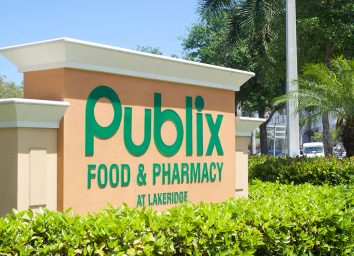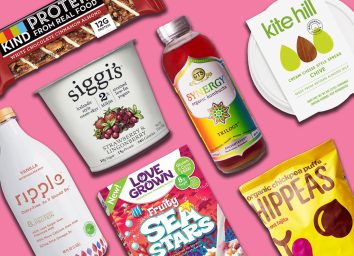13 Great Protein Alternatives If You Can’t Find Meat at the Grocery Store
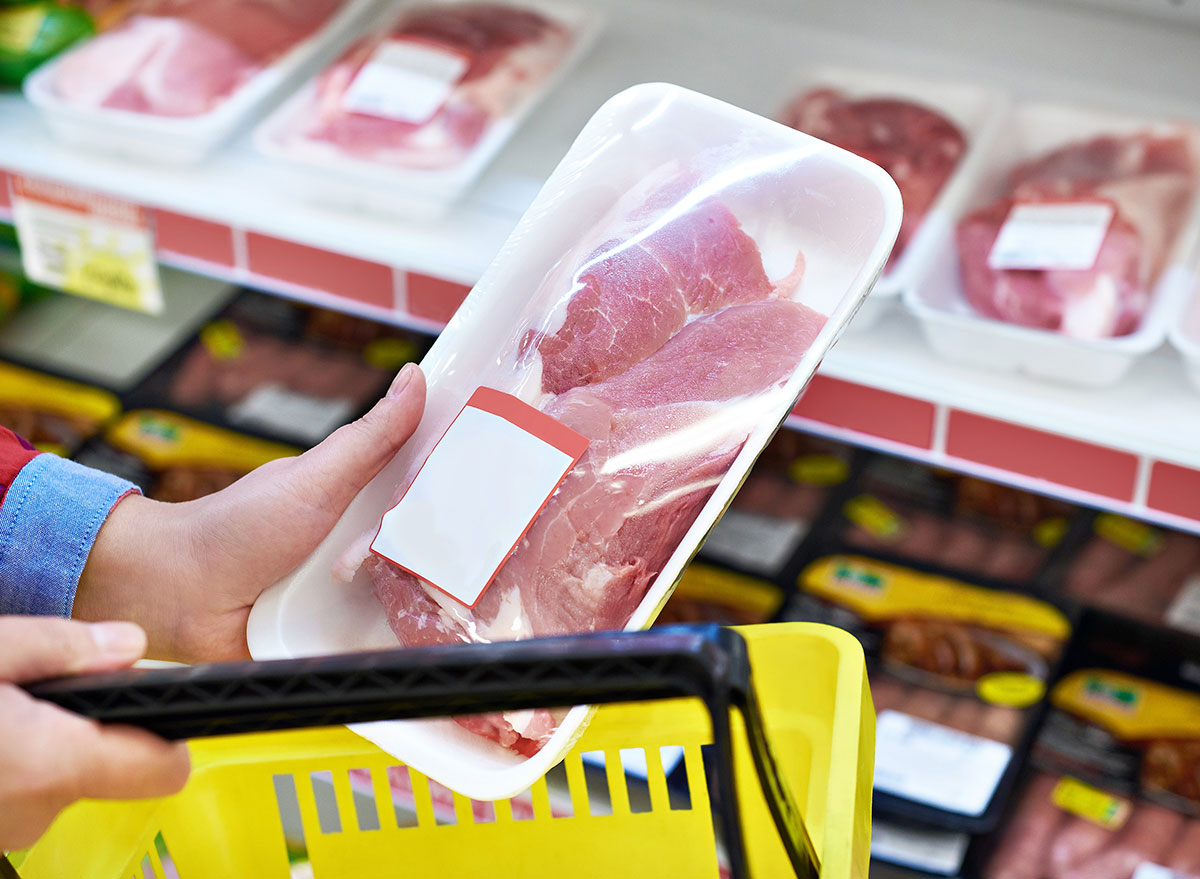
Whether meat production facilities are closing due to COVID-19 outbreaks, or simply to keep employees safe and healthy, it seems many grocery stores throughout the U.S. are running out or low on meat. So what does that mean if your sole source of protein comes from meat? We decided to do the research and look at some of the best protein alternatives that you can stock up on at the store if you can’t find meat.
Here’s how much protein to eat in a day.
In order to determine how much protein you should have in a day, we spoke with Rachel Paul, PhD, RD from CollegeNutritionist.com to get some insight. “The US national recommendations say that the Dietary Reference Intake (DRI) for protein is 0.8 grams of protein per kilogram of body weight, or 0.36 grams per pound,” says Paul. “So a person would multiply their body weight in pounds by 0.36. For a 150 pound person, this person should eat at least 54 grams of protein.”
Now typically a serving size of meat is about 4 to 5 oz. According to a handout published by the Nutrition Department at Johns Hopkins Medicine, protein from animal meat (beef, chicken, turkey, pork, lamb, fish, tuna) will give you 28 grams of protein per a 4 oz. serving. Some seafood has a smaller count—like crabmeat, shrimp, and lobster—which provides 24 grams of protein per a 4 oz. serving.
This means that at least 2 or 3 servings of meat will give you a sufficient amount of protein you need in one day. So in order to consume that much protein, we did a dive into other higher protein sources you can easily find at the store that are not directly connected to meat production.
STAY INFORMED: Sign up for our newsletter to get the latest coronavirus foods news delivered straight to your inbox.
Remember, not all proteins are alike.
While we did a nifty protein comparison, looking at these protein alternatives compared to meat, you should remember that not all proteins are the same—especially the difference between complete and incomplete proteins.
“Not all foods that contain protein have equal amounts of protein,” says Paul. “Some foods primarily consist of protein, [like] eggs and chicken, while other plant-based protein sources are comprised of protein and carbohydrates, [like] beans, lentils, nuts, and seeds. The latter foods have fewer grams of protein per weight, and the protein is often incomplete—meaning, it doesn’t contain all the essential amino acids that an animal-based protein would. When trying to meet protein needs with plant-based sources therefore, total calories may increase.”
Paul recommends that if you’re not getting an animal protein source at a certain meal, you should get “at least 2 sources of non-animal protein at your meal, [such as] nuts and beans, or lentils and quinoa.”
Make sure to track your daily intake.
It’s important to find a good balance between protein, carbohydrates, and healthy fats, even if you’re trying to consume less meat. When tracking, Paul says a good goal to set for yourself is to consume 33% of protein, fat, and carbohydrates each day. “Tracking what you’re eating—even if only for a few days—can be incredibly helpful for you to determine what foods are worth it to you, and what foods keep you personally full,” she says.
Just make sure to be gracious to yourself! Changing up your diet due to a meat shortage (especially in the times of a pandemic) is not easy, and none of us are going to be perfect at this. But tracking will help you to not only keep within a proper calorie intake for your body, but will make you feel better in the long run as you continue to understand your body’s dietary needs.
Here are a few protein alternatives when the grocery is out of meat, and what that protein comparison looks like to your normal meat protein sources. Be sure to take the proper servings into account—our comparisons are much larger than an actual serving!
Plant-based meat
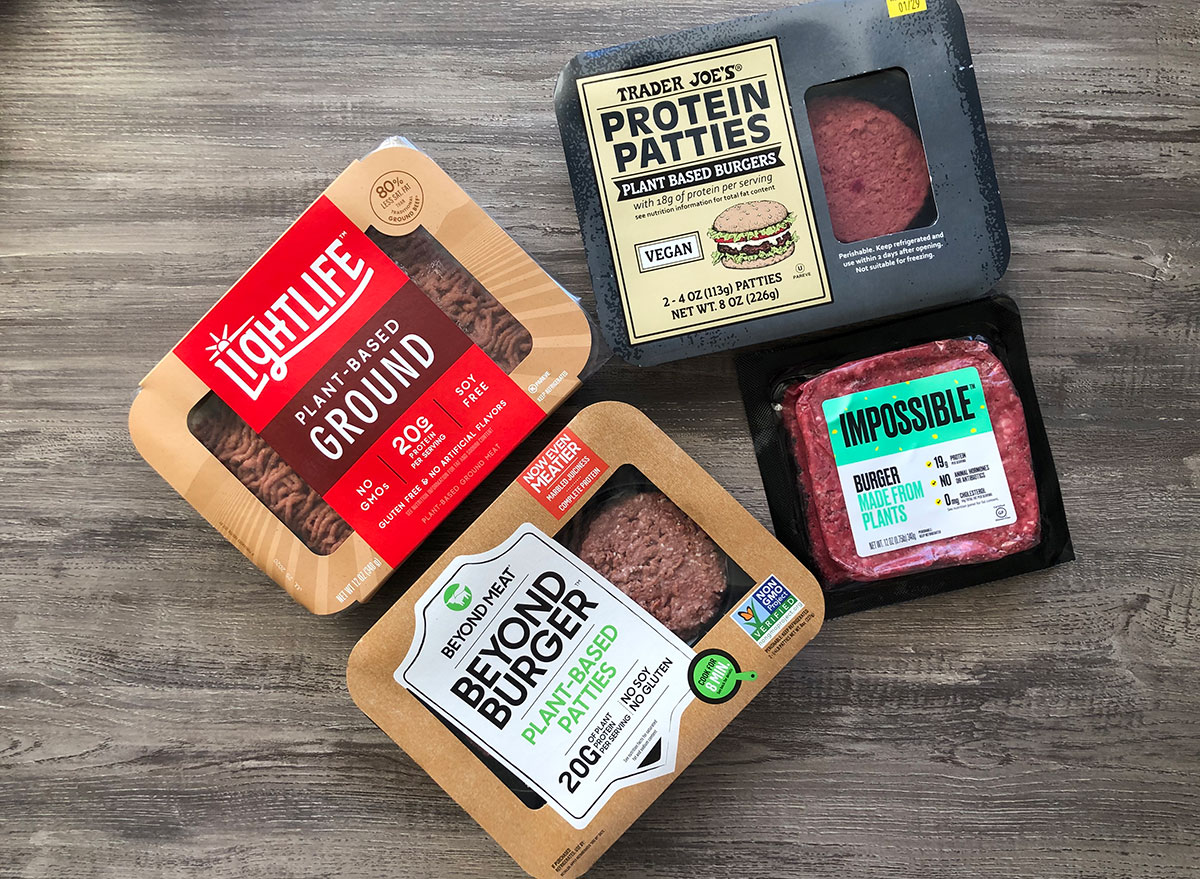
Protein comparison: 1 Angus burger = 1 plant-based burger
One of the easiest ways to get your protein fix without meat is by finding plant-based meat to swap it out with. For example, if you can find yourself a pack of plant-based burgers, those patties are usually equivalent to the amount of protein you would see in a normal burger.
Eggs
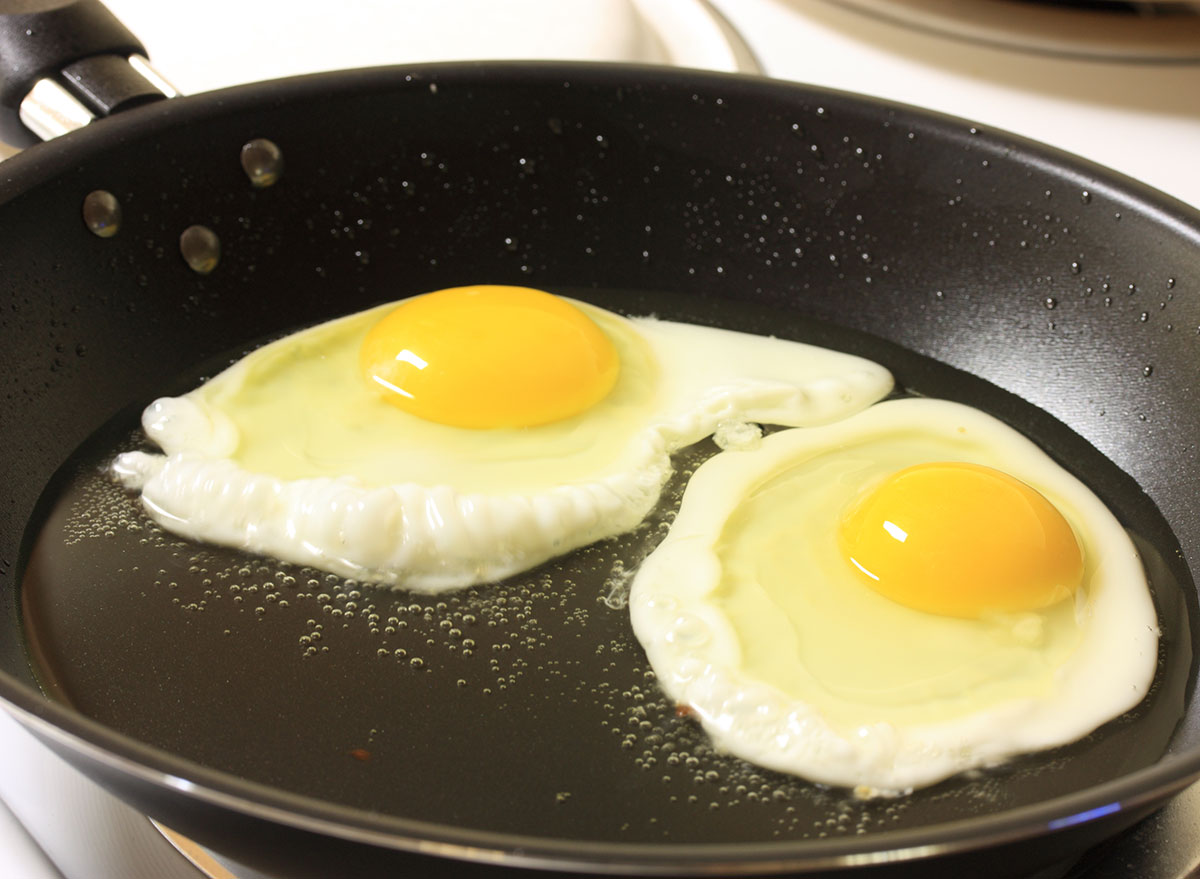
Protein comparison: 4 oz. serving of chicken = 4 large eggs
While eggs may be getting more expensive at the store—and even scarce like some meat—if you can find it, eggs are a great source of protein. One large egg equates to almost 6 grams of protein. So if you scramble up two eggs for breakfast, you’re getting 14 grams of protein.
Edamame
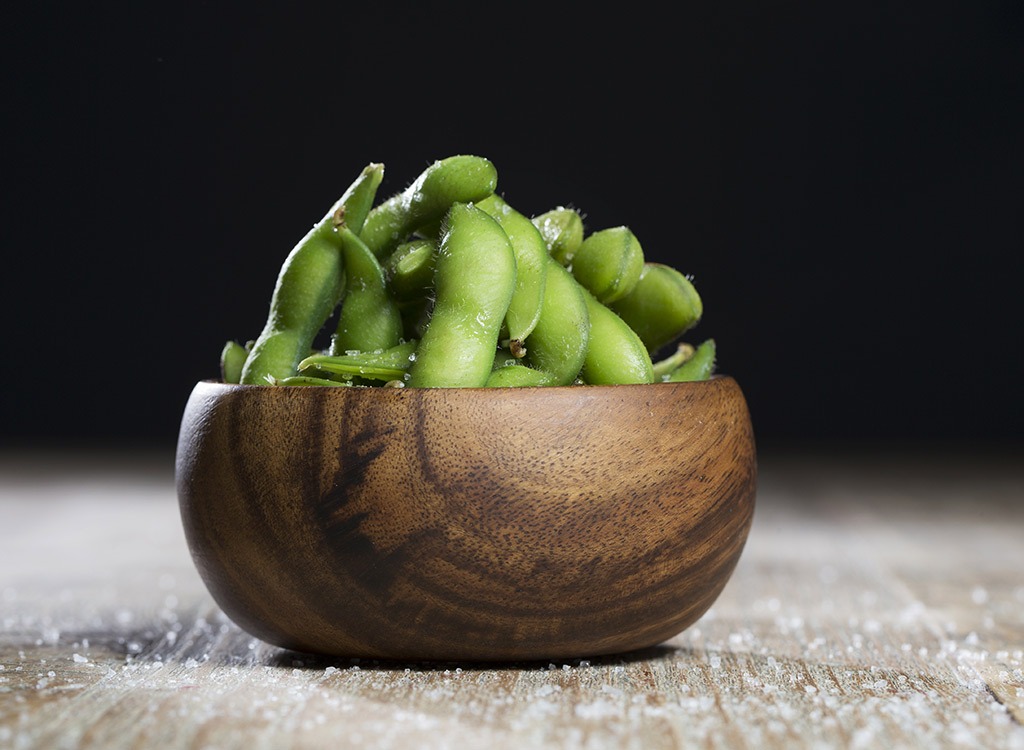
Protein comparison: 4 oz. serving of shrimp = 1 1/2 cups of edamame
Whether edamame is fresh, frozen, or even dry roasted, it is a great source of plant-based protein. 1/2 cup of fresh or frozen edamame is about 8 grams of protein, and 1 ounce of dry-roasted edamame will actually give you 13 grams of protein.
Cow’s milk
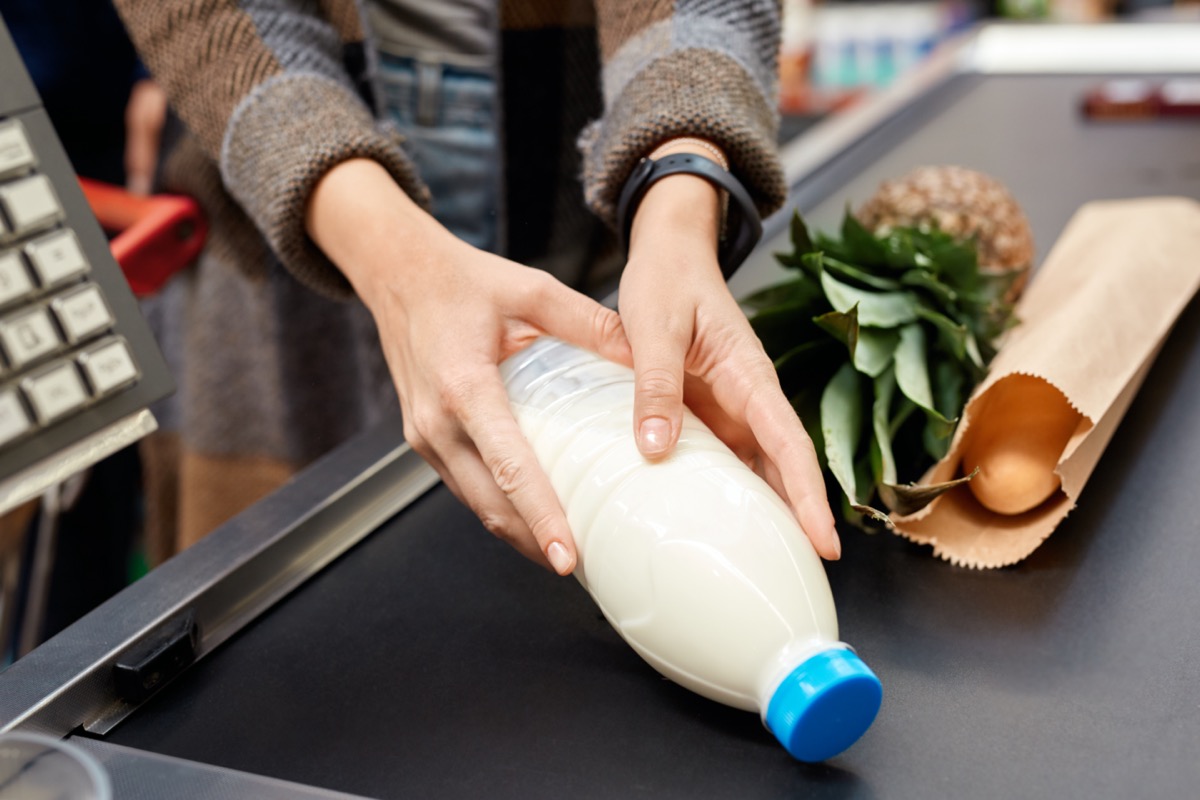
Protein comparison: 4 oz. serving of ground beef = 4 cups cow’s milk
Sorry, almond and oat milk fans! You’re going to get an even higher boost of protein if you sip on cow’s milk instead. 1 cup (8 oz.) of 1 percent milk will give you 8 grams of protein. This is much higher than an 8 oz. serving of almond milk, which will only give you 1 gram of protein. So consider adding more milk to your diet—even mixing up this whipped coffee drink will do!
Greek yogurt
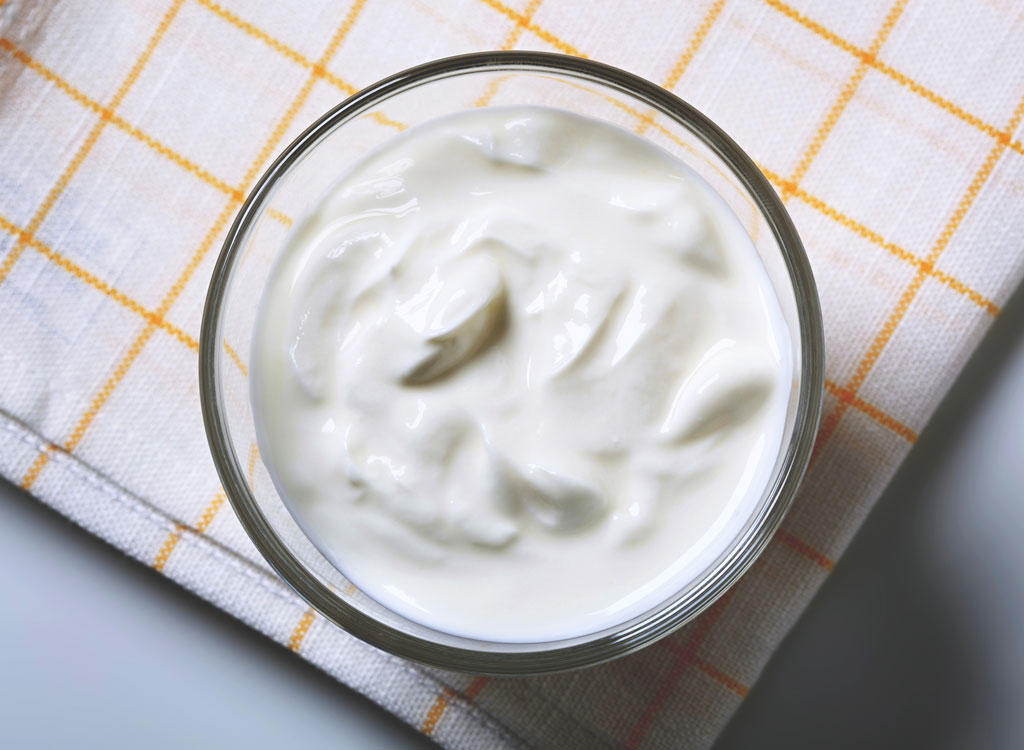
Protein comparison: 4 oz. serving of salmon = 10 oz. Greek yogurt, low-fat, plain
Looking for an item that will give you a higher protein boost in one sitting? Greek yogurt is absolutely the way to go. If you snag a 7 oz. container of low-fat, plain Greek yogurt (like Fage 2%), you’ll be getting a whopping 20 grams of protein. If you mix up the yogurt with 1 oz. of cashews, your snack—or breakfast—now has 25 grams of protein in it! Just make sure to add a little bit of honey for sweetness.
Hummus
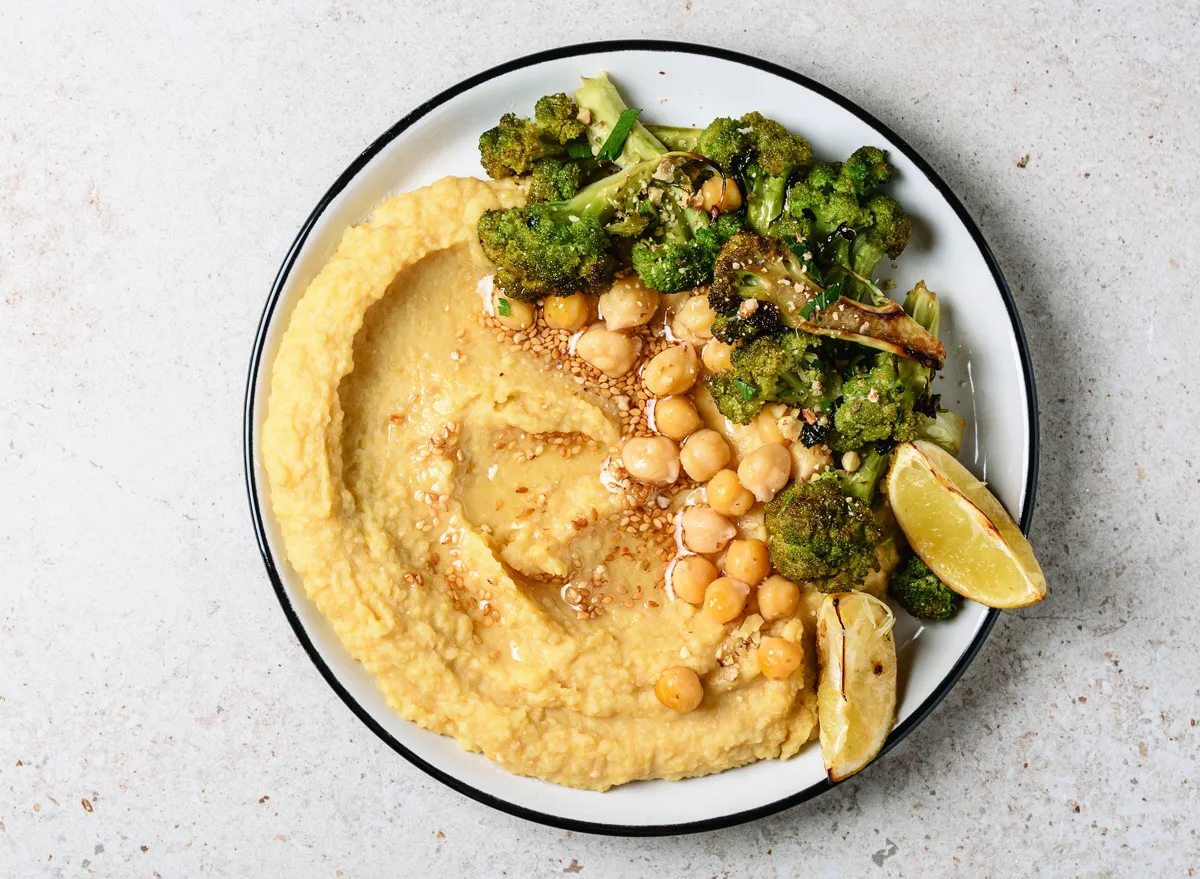
Protein comparison: 4 oz. serving of fish = 1 1/3 cup of hummus
Chickpeas are super high in protein, and an easy way to get them in your diet is by dipping some carrots or celery into hummus! One serving of hummus (about 1/3 cup) gives you 7 ounces of protein, making your carrots and hummus afternoon snack a great way to get in that protein that you’re missing.
Cheese

Protein comparison: 4 oz. serving of ground turkey = 4 oz. of cheese
While there are many types of cheeses out there, generally 1 oz. of cheese gives you the same amount of protein as that serving of hummus—7 grams! If you melt some cheese into your scrambled eggs in the morning, you’re getting 21 grams of protein in one sitting. This typically goes for harder cheeses, though. So stock up on a block of cheese—like cheddar, pepper jack, or even low-moisture mozzarella—and shred it at home to throw in your meals.
Beans
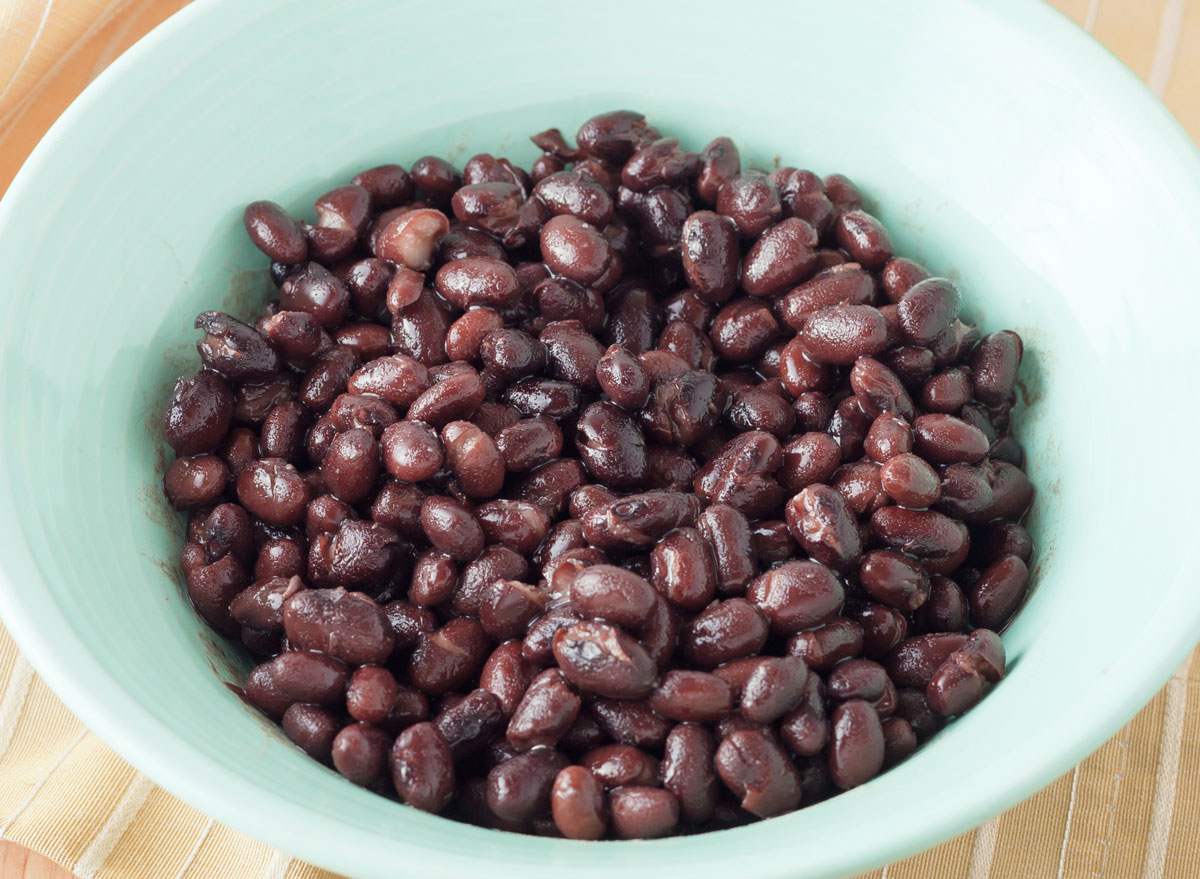
Protein comparison: 4 oz. of tuna = 2 cups of beans
While there are all kinds of canned beans in the grocery store, this particular protein count goes for the types of beans you may find in chili or soups. 1/2 cup of kidney beans, black beans, navy beans, or cannellini beans will give you 8 grams of protein. So if the store is out of cans of tuna, might as well stock up on some beans instead.
Peanut butter
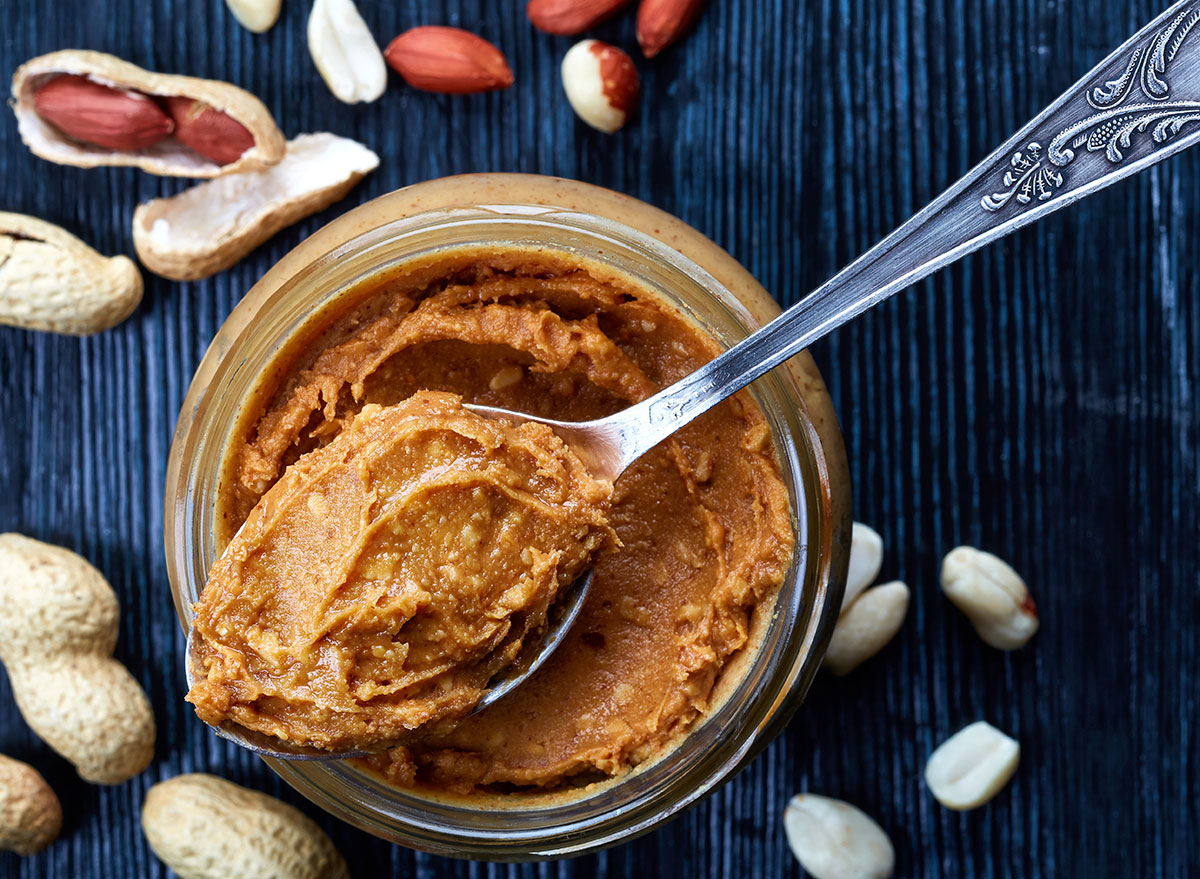
Protein comparison: 4 oz. of pork chops = 8 Tbsp of peanut butter
First, you probably shouldn’t be eating 8 tablespoons of peanut butter in a day, since that would be a whopping 752 calories. We just did this as a comparison so you can see what the difference is between peanut butter and a typical meat protein. However, there’s something to be said about how a 2 tablespoon serving of peanut butter will give you 7 grams of protein—just like a serving of hummus and cheese. If you spread the peanut butter on a slice of sprouted whole-grain bread—like Ezekial—you’ll be getting 12 grams of protein from your snack. Just make sure to measure out that peanut butter because those calories add up fast!
Ricotta or cottage cheese
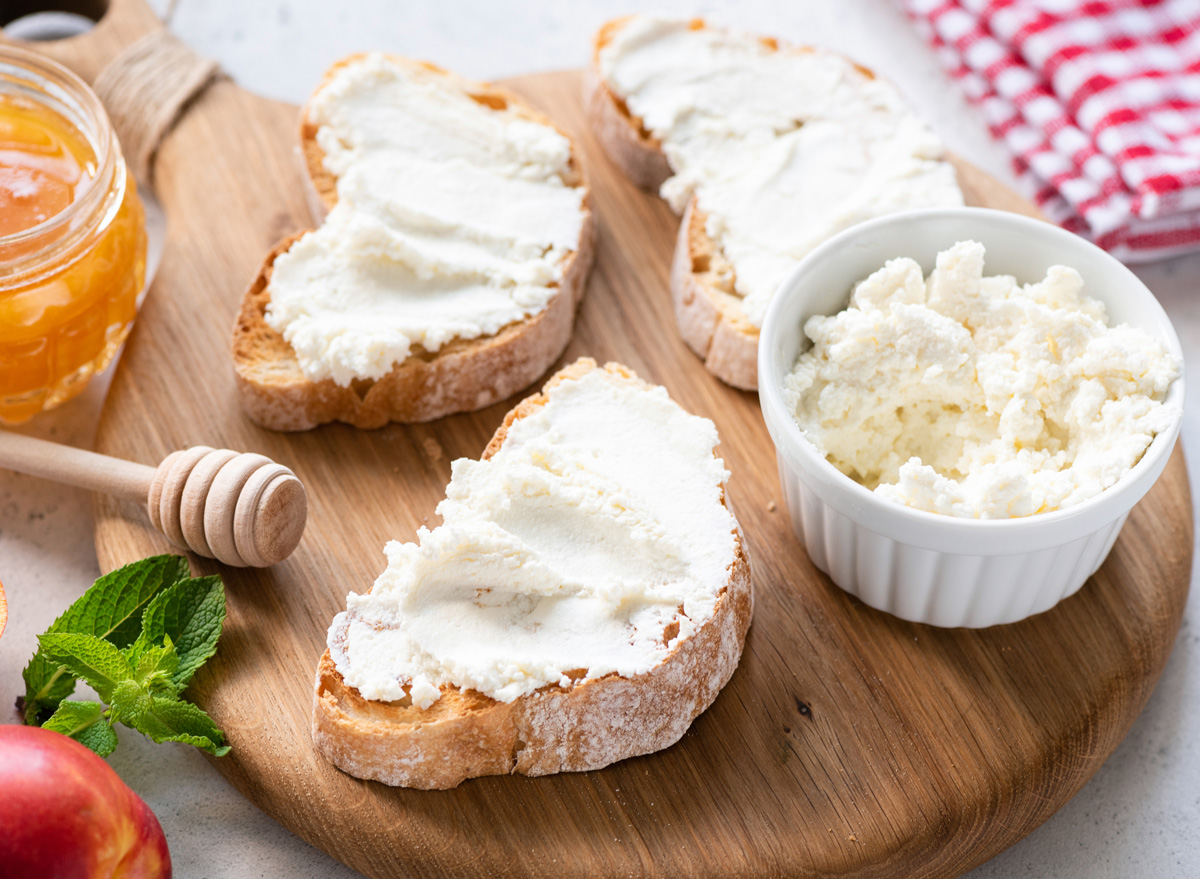
Protein comparison: 4 oz. of lamb = 1 cup of ricotta or cottage cheese
Think you can’t enjoy your favorite pasta dishes without meat? Think again! Cottage cheese and ricotta cheese have a great amount of protein in them, and taste absolutely delicious in a lasagna. 1/2 cup of cottage cheese and ricotta cheese average around 14 grams of protein, which is incredibly high compared to other protein alternatives. You could even spread some of this cheese on a piece of toast—like how we use these spreads on these toast combinations—and top with your favorite fruits.
Lentils

Protein comparison: 4 oz. bacon = 1 1/2 cups of lentils
For those who eat bacon, it’s pretty hard to give it up, but there are great protein alternatives out there that taste delicious—like lentils. Lentils will give you 9 grams of protein per 1/2 cup serving! Plus, lentils are high in fiber, which is something you wouldn’t be getting in your bacon. It sounds like a win-win to us
Nuts
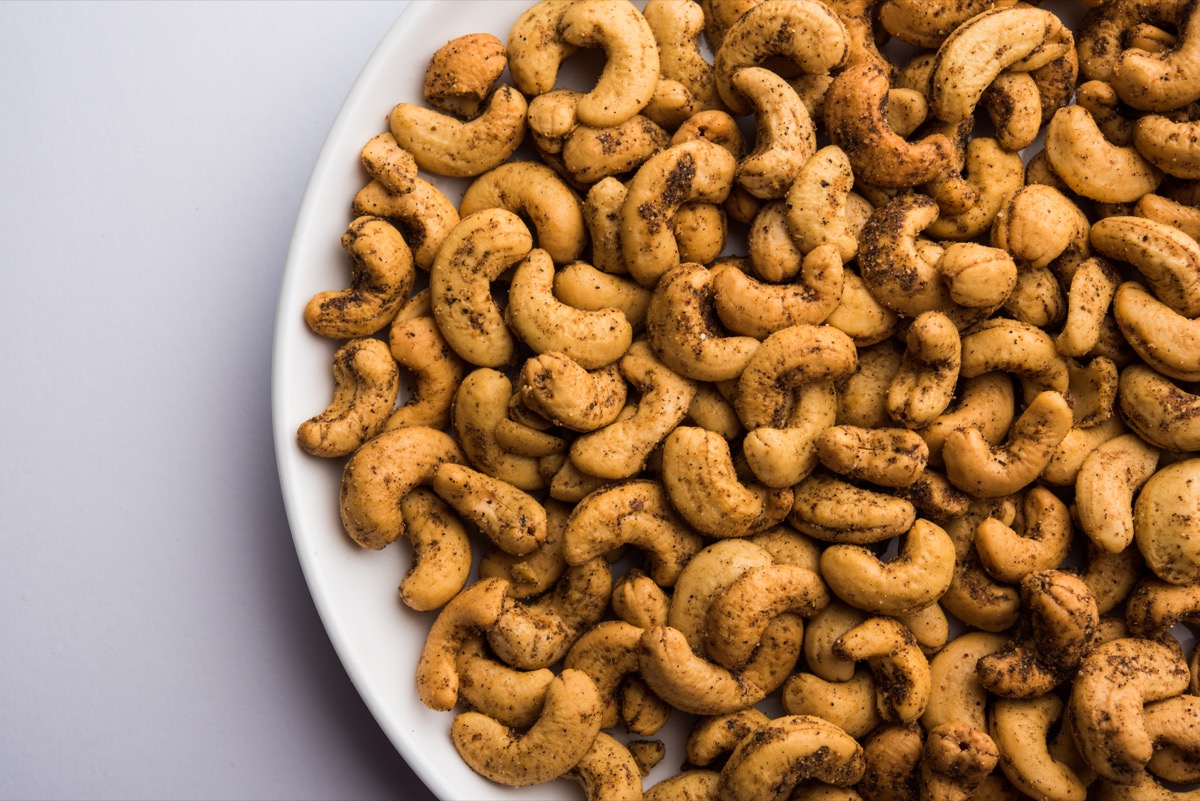
Protein comparison: 1 oz. beef jerky = 2 oz. cashews
Need a salty snack to replace your beef jerky? While beef jerky can vary in terms of protein count, a typical 1 oz. serving will get you around 10 grams of protein. This is the equivalent of 2 oz. of cashews! So head on over to the nut section of your grocery store and pick up some lightly salted cashews to snack on this week. Don’t like cashews? Peanuts, almonds, pecans, and other dry-roasted nuts will do and typically range between 4 and 7 grams of protein per a 1 oz. serving.
High protein cereal
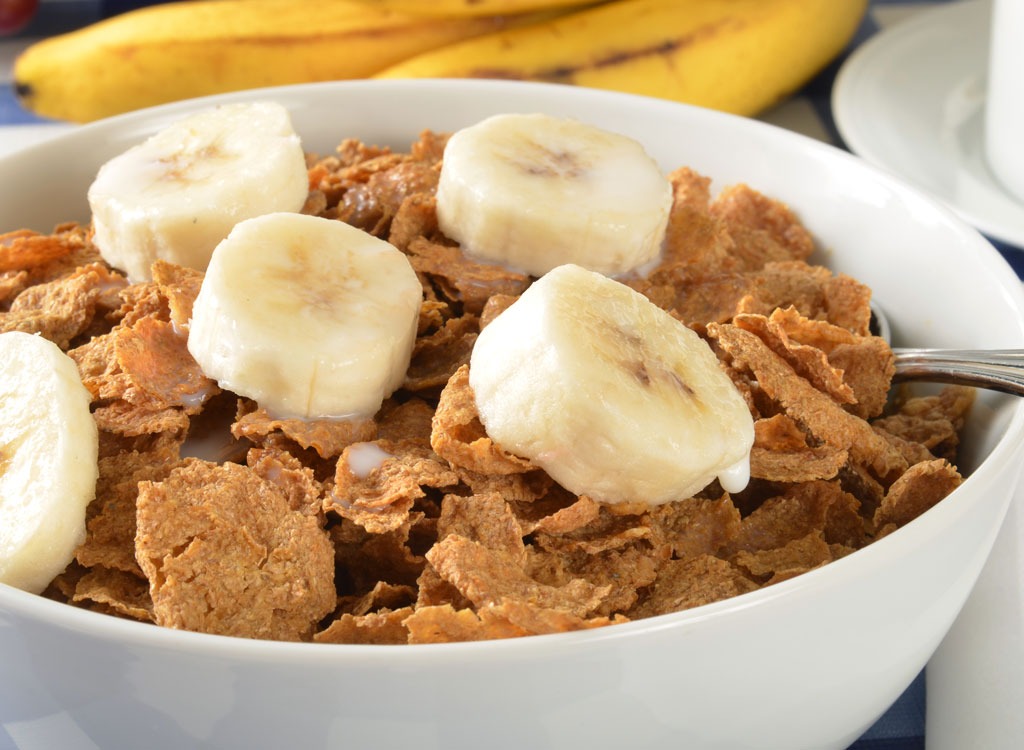
Protein comparison: 4 oz. lobster = 2 1/2 cups of high protein cereal
While cereal isn’t the most filling breakfast compared to eggs or bacon, if you snag a high protein cereal, you’ll be getting a good amount of protein (and typically dietary fiber) with your breakfast. For example, Kashi’s GoLean Cereal gives you 12 grams of protein per a 1 1/4 cup serving, as well as 13 grams of dietary fiber. If you mix your cereal with 1 cup of cow’s milk, you’ll be adding that 8 grams of protein to the bowl, bringing your breakfast up to 20 grams of protein. Plus, the milk has a good amount of fat in it, so you’ll be feeling full and satisfied after breakfast.


